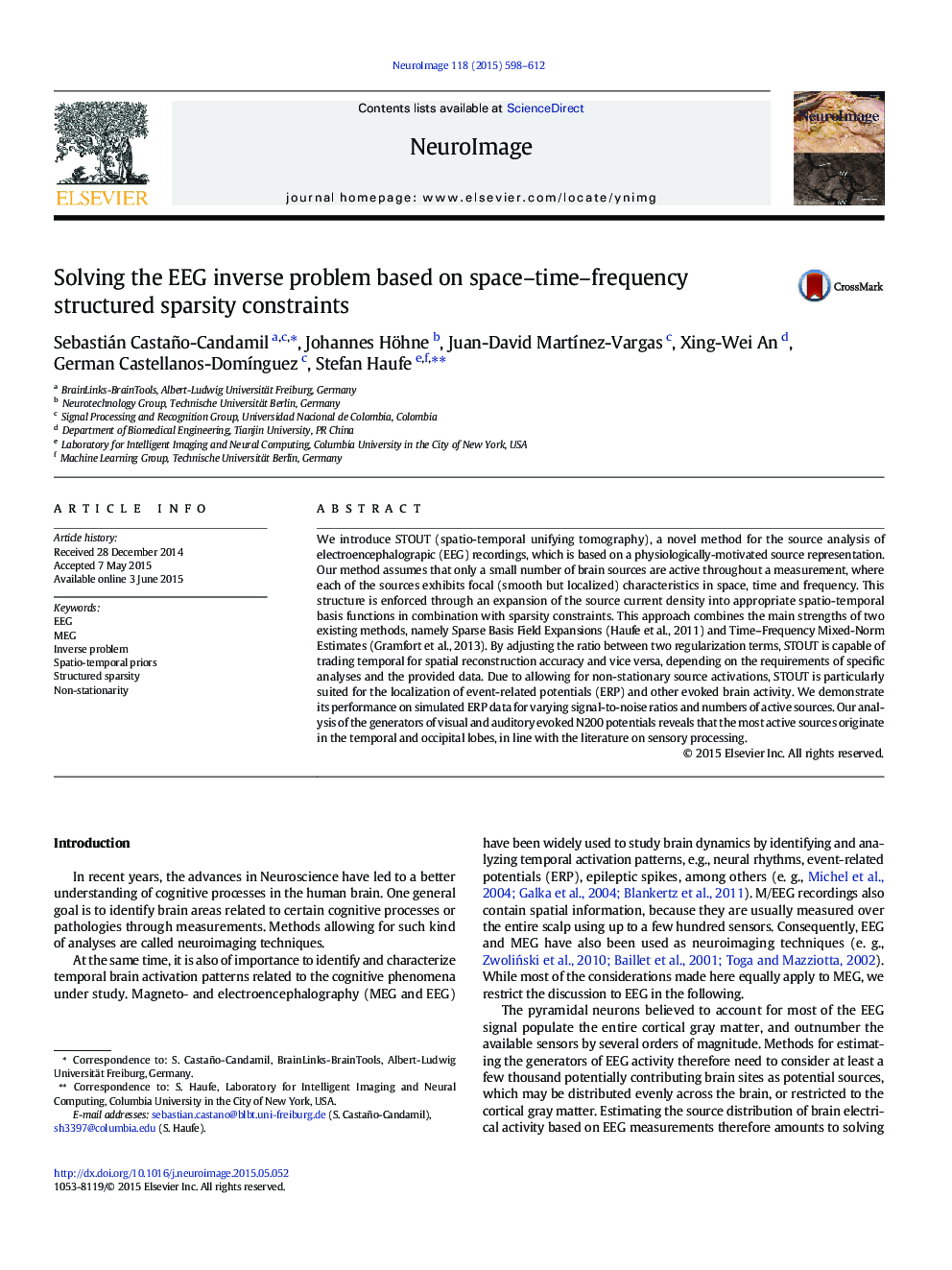| Article ID | Journal | Published Year | Pages | File Type |
|---|---|---|---|---|
| 6025185 | NeuroImage | 2015 | 15 Pages |
â¢We present STOUT, a novel method for solving the EEG inverse problem.â¢STOUT enforces focality of the sources in the space-, time and frequency domains.â¢Non-stationary sources are modeled by wavelet expansions as in Gramfort et al., 2013.â¢Spatial basis functions foster smooth focal sources as in Haufe et al., 2011.â¢Analysis of steady-state evoked potentials reveals main generators in sensory areas.
We introduce STOUT (spatio-temporal unifying tomography), a novel method for the source analysis of electroencephalograpic (EEG) recordings, which is based on a physiologically-motivated source representation. Our method assumes that only a small number of brain sources are active throughout a measurement, where each of the sources exhibits focal (smooth but localized) characteristics in space, time and frequency. This structure is enforced through an expansion of the source current density into appropriate spatio-temporal basis functions in combination with sparsity constraints. This approach combines the main strengths of two existing methods, namely Sparse Basis Field Expansions (Haufe et al., 2011) and Time-Frequency Mixed-Norm Estimates (Gramfort et al., 2013). By adjusting the ratio between two regularization terms, STOUT is capable of trading temporal for spatial reconstruction accuracy and vice versa, depending on the requirements of specific analyses and the provided data. Due to allowing for non-stationary source activations, STOUT is particularly suited for the localization of event-related potentials (ERP) and other evoked brain activity. We demonstrate its performance on simulated ERP data for varying signal-to-noise ratios and numbers of active sources. Our analysis of the generators of visual and auditory evoked N200 potentials reveals that the most active sources originate in the temporal and occipital lobes, in line with the literature on sensory processing.
